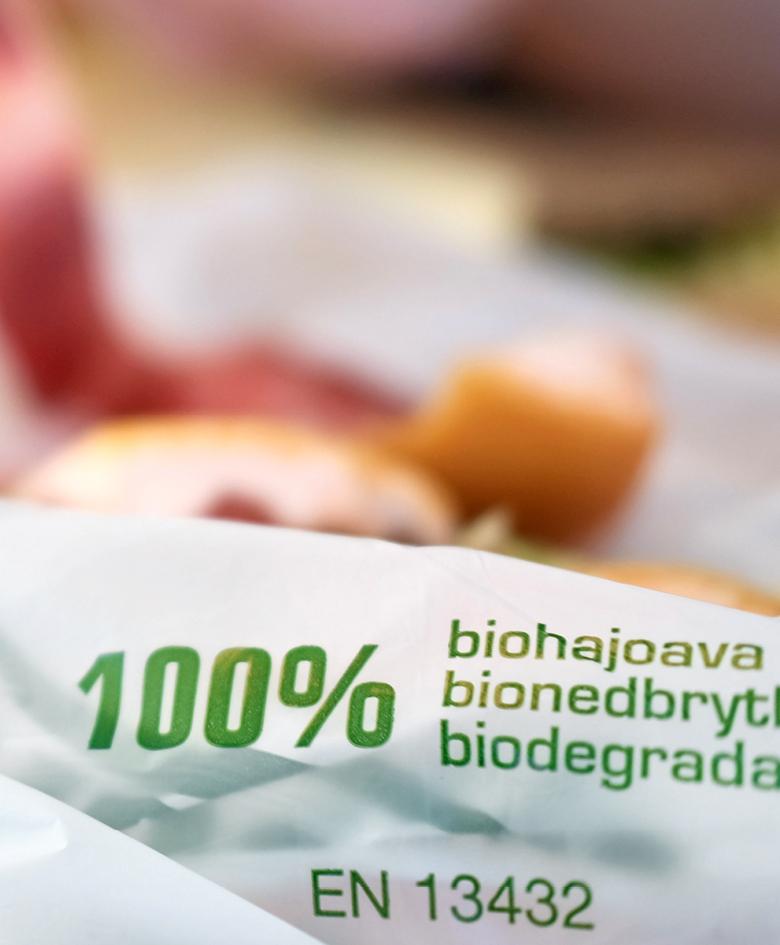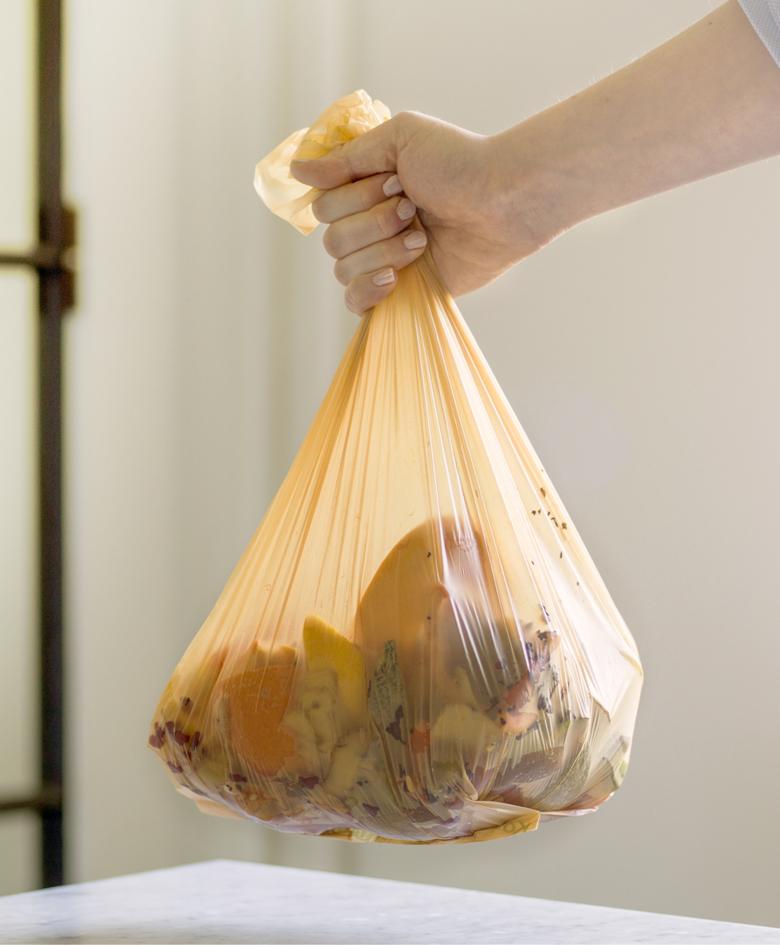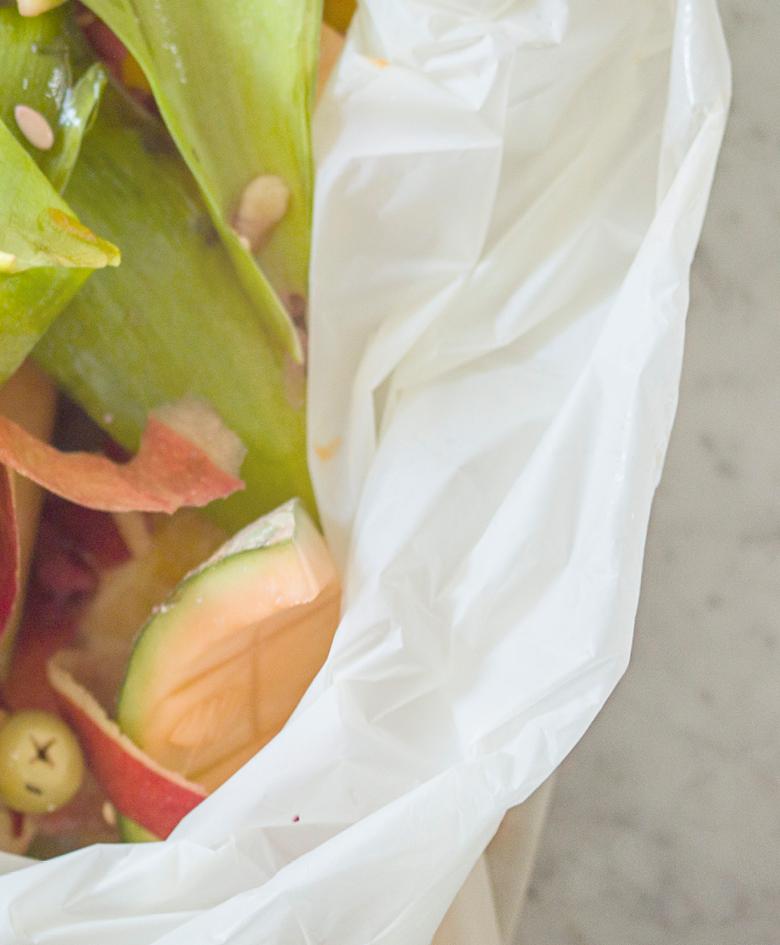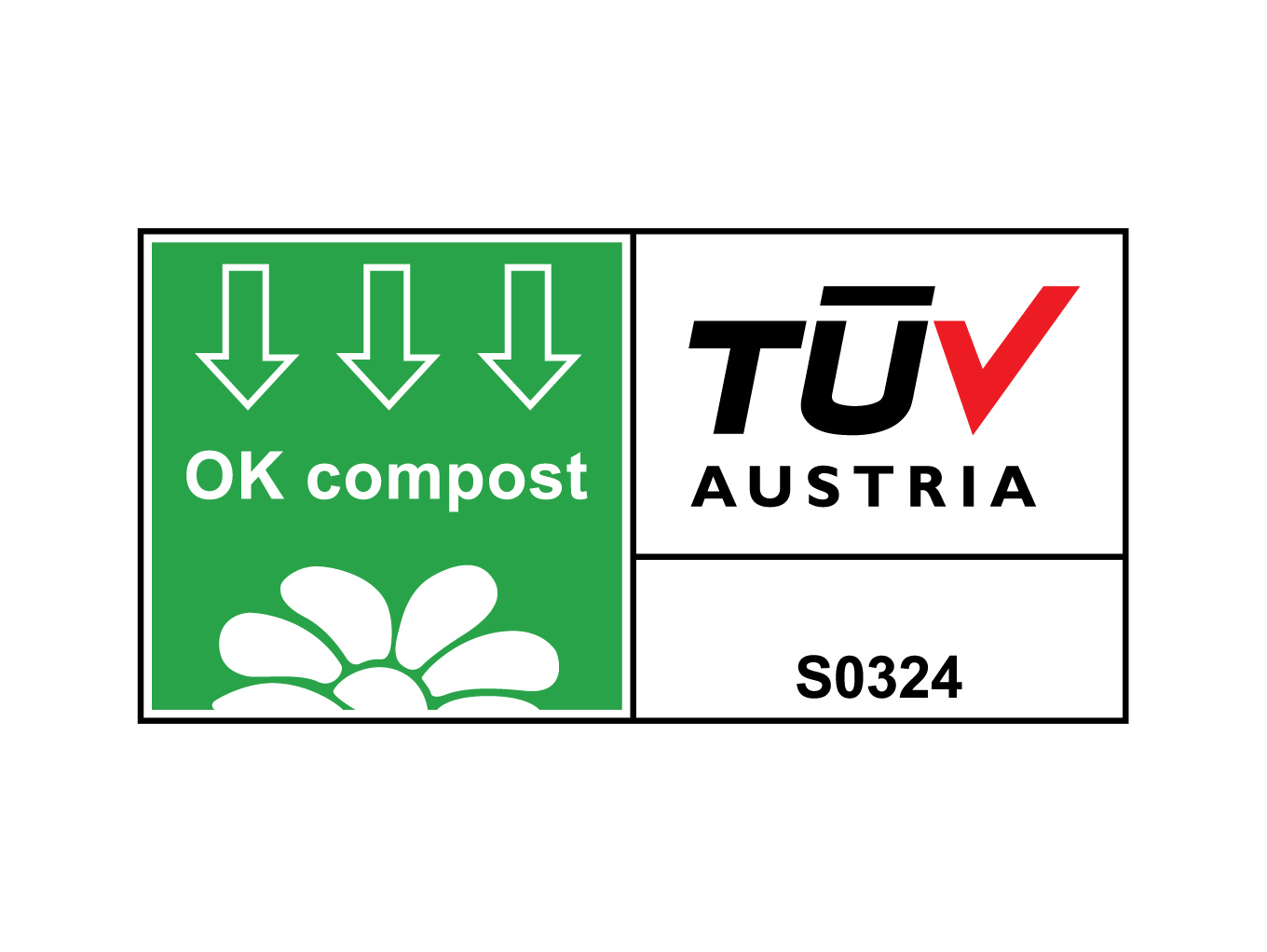Most people want to know how Bioska works from an environmental perspective, or in the sorting and treatment of biowaste.

QUESTION 1
Does Bioska
leave microplastics?
No. All Bioska products meet the European standard for industrial compostability EN 13432. The Finnish Environment Institute (SYKE) studied the decomposition of Bioska’s newest materials in both laboratory and marine conditions. The test showed that our material breaks down 100% into carbon dioxide, water and humus – even in natural conditions.

QUESTION 2
What materials are Bioska bags made from?
Bioska bags made from?
Bioska is a Finnish material innovation. We’ve been developing it in Ylöjärvi for over twenty years.
Our mission is to create products that are as durable as traditional plastic, but are also 100% compostable. The exact recipe is a secret, but 30–50% of our raw material is renewable vegetable starch. Bioska products are either plant-based or use polymers that are naturally produced by bacteria. In 2021, the EU will be banning a whole host of single-use plastics and the only acceptable replacements will be products made from natural polymers.

QUESTION 3
How durable are Bioska bags?
In autumn 2019, we commissioned a consumer survey in which more than a thousand randomly selected respondents held Bioska to be the most durable compostable biowaste bag on the market.
From time to time, we get feedback saying that a bag has ‘leaked’. The impression that the bag has leaked is caused by condensation that forms between the warm biowaste and the cooler sides of the container. Our newest product, Bioska Plus, solves even this problem. When a biowaste bag can breathe, no condensation forms and the bottom of the bag will be dry when it’s lifted out of the container. That is, if the material retains the biowaste’s moisture, like Bioska Plus does.

QUESTION 4
Do Bioska bags decompose
at waste treatment facilities?
Bioska meets the European standard for industrial compostability EN 13432. Accordingly, 90% of the material is converted into carbon dioxide, water and humus within 180 days in industrial conditions. If the waste treatment facility’s process is shorter than this, it will usually remove the bags for incineration before composting the biowaste.
We’re continually developing our materials in collaboration with waste treatment facilities. Bioska Plus is currently our most easily tearable and fastest degrading product. It’s the only biowaste bag on the market that Stormossen (a waste treatment facility in Vaasa) recommends to customers alongside paper bags.

QUESTION 5
What does ‘industrially compostable’ mean?
Industrial compostability is specified by the European standard EN 13432. In order for packaging to be called compostable and biodegradable, one of the main criteria is that no more than ten per cent of the material should remain in a 2 mm sieve after 12 weeks of treatment. The processing temperature may vary between 40–70°C.
After six months of treatment at 58°C (+/- 2°C), at least 90% of the material must have decomposed into carbon dioxide, water and humus.
In addition to its decomposition, the material is also tested for any negative impacts on the composting process and the compost produced. Their absence is verified by numerous standardised measurements performed by an independent organisation. Therefore, it is also known that products with EN 13432 certification will only contain low concentrations of heavy metals.
-
What are Bioska and Hauska bio bags made of?
Bioska and Hauska products are made of potato or corn starch-based, fully biodegradable material.
-
Where can I buy Bioska products?
Bioska products are available in most grocery stores and retailers nationwide
-
Where can I buy BioskaPlus products?
BioskaPlus products are available in most grocery stores and retailers nationwide
-
Where can I buy Hauska products?
Hauska products are available in most grocery stores and retailers nationwide
-
Can I use Bioska bags for storing food?
Bioska biowaste bags are mainly intended for collecting bio waste, but the Bioska product family also includes food-approved products, such as the Bioska fruit and vegetable bag and food sample bag.
-
What is the difference between BioskaPlus and Bioska products?
BioskaPlus products compost faster. BioskaPlus products are more breathable and keep the home bio waste container drier and cleaner.
-
What is the difference between home compostable and industrially compostable products?
Industrially compostable products require a higher temperature and industrial conditions for the degradation process.
-
What types of chemical toilets is Bioska DryToilet suitable for?
Bioska DryToilet bags are suitable for dry toilets and freezing toilets on the market. Check the toilet’s instruction manual for more information about suitable bags.
-
How does Bioska agricultural film differ from normal agricultural film?
Bioska agricultural film does not need to be removed from the soil, which simplifies the process and saves costs. Bioska is also entirely biodegradable and leaves no traces of plastic in the soil.
-
What bag sizes are available?
Bioska bags come in sizes of 6, 10, 20, 30 and 40 litres. Bioska bio sacks and bin liners come in sizes of 75, 140, 240 and up to 1,300 litres.
-
Why are BioskaPlus bags brown?
The BioskaPlus product family has been developed in cooperation with waste facilities, and brown colour distinguishes it from other Bioska products.
-
How is Bioska different from other biodegradable bags on the market?
Bioska products are made in Finland and carry the Key Flag certification. Our products are made in Ylöjärvi and are 100% compostable.
-
Can I use Bioska bags for garden waste?
Yes, but we recommend checking your local waste authority for instructions on how to recycle and sort garden waste.
-
Are Bioska bags manufactured in Finland?
Bioska, Hauska and BioskaPlus products are manufactured in Ylöjärvi in Finland. You can recognize an authentic Bioska product from EN 13432 notation.
-
How is the Bioska plant CO2 neutral?
Our production is CO2 neutral, as our plant is powered by wind energy and harnesses waste heat in its processes.
-
Why does liquid soak through biowaste bags so easily?
Biofilm is a breathable material that allows some moisture to pass through in both ways (except BioskaPlus, in which no moisture can pass outside the bag).
